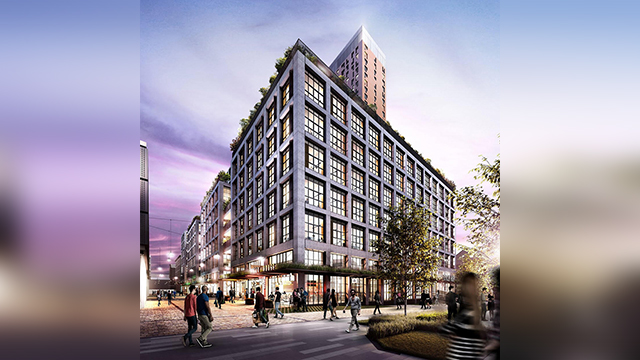Building up, not out, is the answer
COMMENT: Our dysfunctional housing markets mean that for around 25 years we have been building half the new homes we need, writes Mark Prisk, FRICS, MP, former housing minister.
The Housing White Paper is a strong foundation for addressing this – by focusing on supply, finance, planning and market conditions in the round, and not by putting one solution above any other. There is no silver bullet.
However, one theme which keeps re-emerging is how our existing cities can best accommodate their growing populations. Thus, the debates about whether the Green Belt should be redrawn, or whether we need more skyscrapers, both stem from a realisation that we need to use land as productively as we can.
COMMENT: Our dysfunctional housing markets mean that for around 25 years we have been building half the new homes we need, writes Mark Prisk, FRICS, MP, former housing minister.
The Housing White Paper is a strong foundation for addressing this – by focusing on supply, finance, planning and market conditions in the round, and not by putting one solution above any other. There is no silver bullet.
However, one theme which keeps re-emerging is how our existing cities can best accommodate their growing populations. Thus, the debates about whether the Green Belt should be redrawn, or whether we need more skyscrapers, both stem from a realisation that we need to use land as productively as we can.
In fact large swathes of UK cities are built to a low density, with some areas rarely reaching above a second or third storey. Drive out of London along the A13 (or many other arterial routes) and what’s surprising is just how low level the communities are. That’s why I‘m calling for our cities to rise up – to build up, not out.
There are good urban arguments in favour of increasing housing densities. It makes the best use of a scarce resource – land – and complements existing planning rules against urban sprawl. Public services can be delivered most efficiently in dense communities. By contrast, the sprawling nature of post-war “new towns” makes public transport, for example, very difficult to sustain.
Higher density doesn’t mean lower quality. In the nineteenth century, Thomas Cubitt designed and built Belgravia. The housing density was and remains high, by comparison to many other comparable parts of London. The terraces and squares are now seen as conventional, yet that was not the view in the 1840s. What Cubitt showed is that higher density can be achieved in a form which is also high quality and popular.
[caption id="attachment_907394" align="aligncenter" width="847"] Mews houses in London’s Notting Hill[/caption]
New permitted development rights
So what does this mean in practice? Together with two other former Ministers – Nick Boles and John Penrose – I am suggesting the government uses the pending update to the National Planning Policy Framework to extend permitted development rights so that planning permission is no longer required for urban property owners to build up to the height of the tallest building in the same block, or to the fifth story, whichever is greater.
So the result would be mansion blocks, terraces or mews housing, not sky-high towers. This is a form of development understood in our cities and large towns and it delivers significant increases in housing density. It also has the ability to deliver liveable places, with quality public spaces.
Local authorities could issue local building codes to ensure that designs comply with local architectural styles. Listed properties or buildings in conservation areas would still need to obtain heritage consent for any changes, and building regulations would be unchanged. Again, density does not have to be at the expense of quality.
Urban renewal
What this new set of permitted development rights could achieve, would be to encourage urban property owners to consider significant investment in our city and town centres. As bricks and mortar retailing declines we need to reshape our urban centres and this change could reinvigorate them, not least by bringing people back into the heart of our towns and cities. Some of seaside towns which have been neglected might also benefit from this urban renewal.
Alongside the push for greenfield developments around towns, this proposal would enable us to renew thousands of existing buildings right in the heart of our urban communities. That would be good for the environment and revitalising for our town and city centres.











